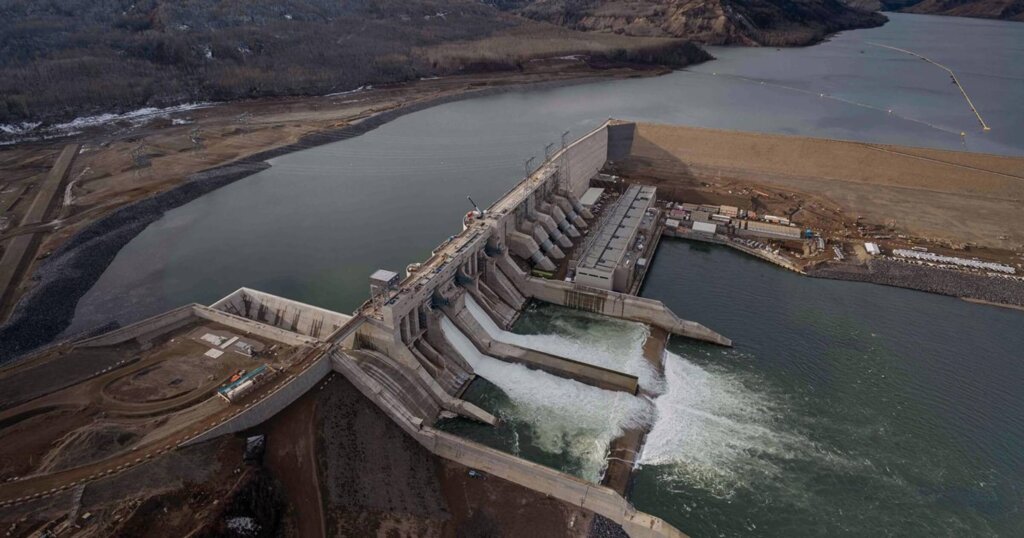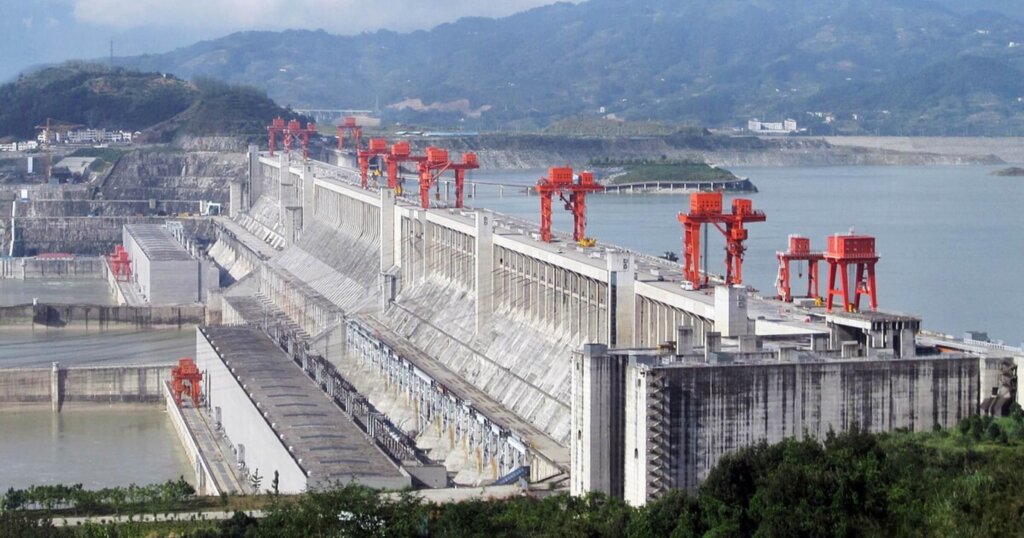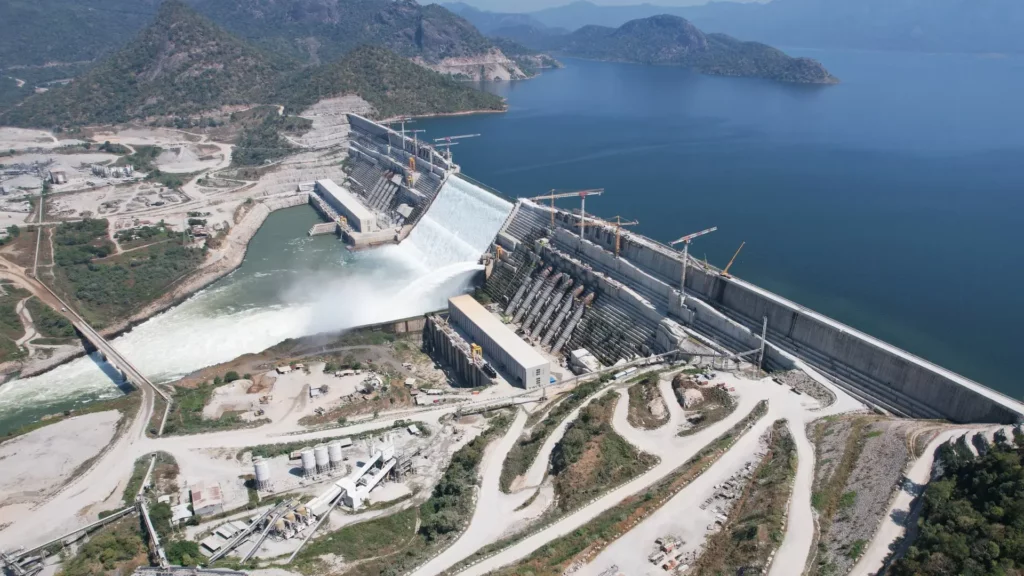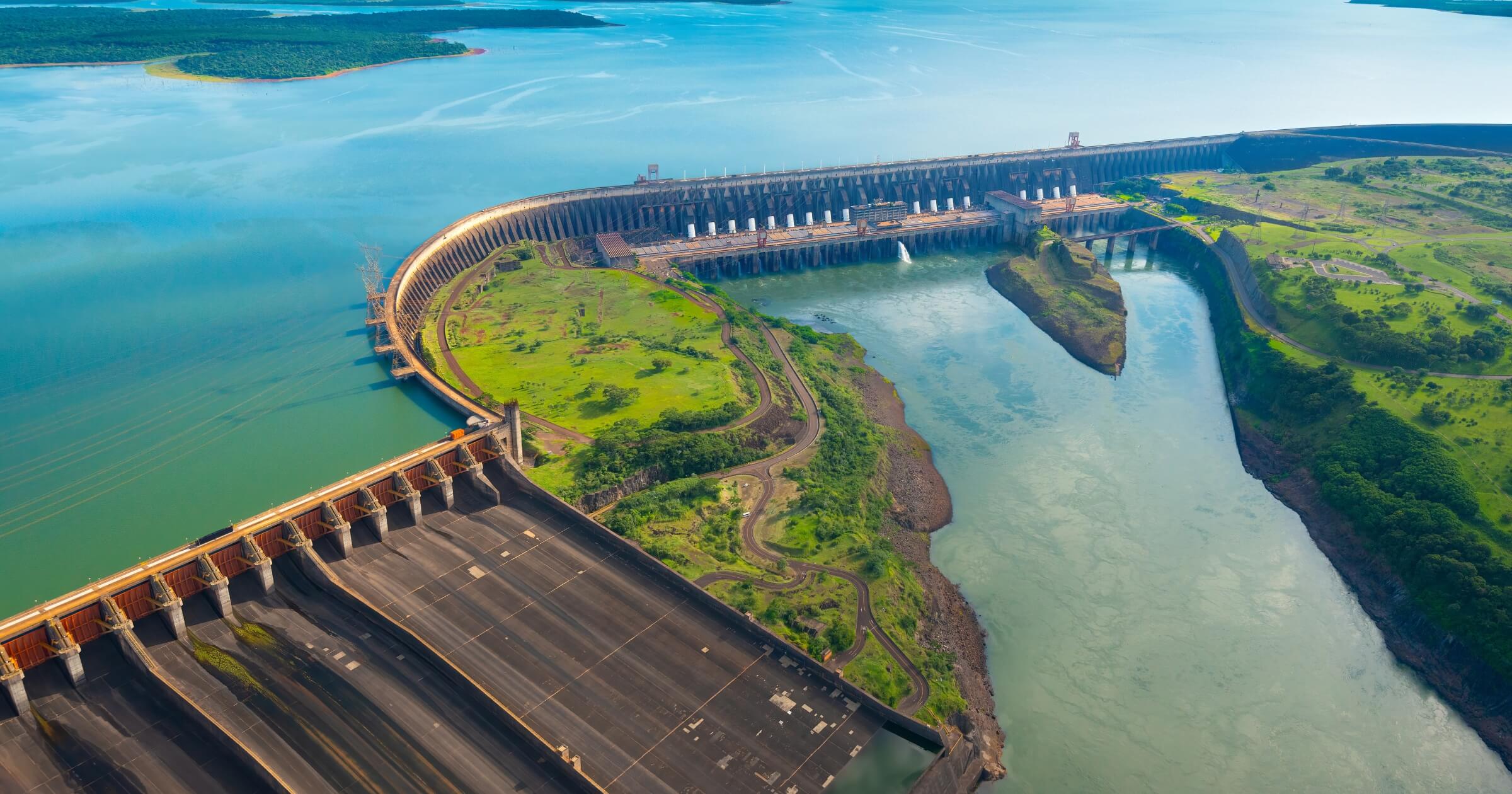Building a dam can cost anywhere from a few million to tens of billions of dollars, depending on where it is, what it’s made of, and how big it needs to be. From supplying power to managing water levels, dams can serve many purposes. Rising costs and better renewable alternatives are starting to question whether they’re still the best investment.
Quick look:
- Building a dam is a major financial undertaking. The average U.S. construction cost is around $5,200 per kilowatt, meaning a 100 MW project can exceed $500 million.
- Dam type, location, capacity, labor costs, and permitting heavily influence overall expenses.
- High-profile projects like Canada’s Site C, China’s Three Gorges, and Ethiopia’s GERD show how costs and controversies can escalate.
- With rising costs, environmental concerns, and cheaper alternatives like wind and solar, the future of large-scale dam building is increasingly uncertain.
How much money does a dam cost in North America?
Whether it’s a small structure for local irrigation or a massive hydroelectric project meant to power cities, costs can swing dramatically based on where the dam is, what it’s made of, and how it’s designed.
So, how much money does a dam cost? According to the U.S. Energy Information Administration (EIA), hydroelectric plants have the highest average construction cost of any electricity-generating technology in the U.S., at around $5,200 per kilowatt (kW) of installed capacity. That means a 100-megawatt (MW) dam could run over $500 million.
The biggest factors affecting cost:
- Type of dam: Gravity, arch, embankment, and other dam designs all require different materials, labor, and structural demands.
- Location and topography: Remote locations, mountainous terrain, or unstable ground can increase site prep and access costs.
- Size and capacity: Larger dams capable of holding more water or generating more electricity naturally require more resources.
- Labour and construction materials: Local wage rates, availability of skilled labor, and material costs (like concrete or steel) all play a role.
- Environmental studies and permitting: Environmental impact assessments and regulatory approvals can take years and cost millions.
- Safety and engineering requirements: Earthquake resistance, spillway design, and flood protection features must meet strict safety standards.
- Transmission infrastructure: Power doesn’t just appear at your outlet—getting electricity from the dam to the grid adds additional costs.
When you line it all up, it’s easy to see why building a dam in North America is such a major investment, and why it’s becoming harder to justify in today’s evolving energy landscape.
Mega dam projects around the world and what they cost
Site C Dam – Canada

Image sourced from ReNew Canada
- Projected cost: Approximately $16 billion CAD (originally estimated at $8.3 billion CAD)
The Site C Clean Energy Project is a hydroelectric earthfill dam under construction on the Peace River in northeastern British Columbia. Once completed, it will be the third dam on the Peace River, providing 1,100 megawatts (MW) of capacity and producing about 5,100 gigawatt hours (GWh) of electricity annually—enough to power roughly 450,000 homes in B.C.
Despite its potential to supply clean energy, the project has faced significant public opposition due to environmental concerns and escalating costs. Critics highlight issues such as the flooding of agricultural land, impact on local ecosystems, and infringement on Indigenous territories. Additionally, the project’s budget has nearly doubled from initial estimates, raising questions about its economic viability.
Three Gorges Dam – China

Image sourced from Wikipedia
- Final cost: Approximately $28.6 billion USD
The Three Gorges Dam, spanning the Yangtze River in Hubei province, is the world’s largest hydroelectric power station by capacity, boasting an installed capacity of 22,500 megawatts (MW). The dam’s construction created a massive reservoir extending over 600 kilometers, significantly enhancing flood control and improving navigation along the river.
However, the project has been marred by significant controversy. Environmental concerns include increased risks of landslides and ecosystem disruption due to the vast reservoir. Socially, the dam’s construction led to the displacement of over 1.2 million people, raising issues related to inadequate compensation and challenges in resettlement.
Grand Ethiopian Renaissance Dam (GERD) – Ethiopia

Image sourced from WeBuild
- Projected cost: Approximately $5 billion USD
The Grand Ethiopian Renaissance Dam (GERD) is poised to become Africa’s largest hydroelectric project, with an expected capacity of 6,450 megawatts (MW). Situated on the Blue Nile River in Ethiopia’s Benishangul-Gumuz region, about 30 kilometers upstream from the Sudanese border, the dam is a cornerstone of Ethiopia’s strategy to alleviate energy shortages and propel economic development.
Beyond addressing domestic energy needs, GERD is integral to Ethiopia’s plans to export electricity to neighboring countries, generate revenue, and foster regional integration. However, the project has been a focal point of geopolitical tension, particularly with downstream nations Egypt and Sudan. Both countries have expressed concerns over potential reductions in their vital Nile water shares, leading to prolonged negotiations and diplomatic challenges.
Despite these controversies, Ethiopia has proceeded with the dam’s construction, emphasizing its significance for national development and asserting its rights to utilize the Blue Nile’s resources.
Why the cost of building a dam may not be worth it in the future
Hydropower has long been considered a clean energy powerhouse, but in today’s energy landscape, its high price tag is starting to raise eyebrows. Dams have some of the highest upfront construction costs compared to renewable options like wind and solar, but they also come with expensive long-term maintenance and operational demands.
According to Future Energy Systems, a hydroelectric facility’s life cycle costs can be massive, especially when considering sediment buildup, dam aging, and structural repairs. Even more concerning, dams are especially vulnerable to climate variability, meaning droughts, floods, or shifts in seasonal water flow can significantly affect power generation.
Meanwhile, wind and solar technologies have become increasingly cost-effective, faster to deploy, and easier to scale. They don’t require the same land use or environmental disruption, and they’ve seen dramatic price drops in recent years. That makes it harder to justify the billions needed to build a dam, especially when quicker, cheaper, and cleaner alternatives are on the table.
Bottom line
Building a dam is a decades-long commitment with serious financial, environmental, and political trade-offs. While dams can provide steady renewable power and help manage water resources, they’re no longer the obvious choice in a world where wind and solar are cheaper, faster to build, and easier to maintain.
As the energy landscape shifts to alternative energy solutions, countries will need to consider whether or not dams are worth the cost or whether it’s time to invest in smarter, more flexible solutions.
Want more insights like this on energy, infrastructure, and emerging technologies? Subscribe to our newsletter and stay ahead of the curve.



1 comment